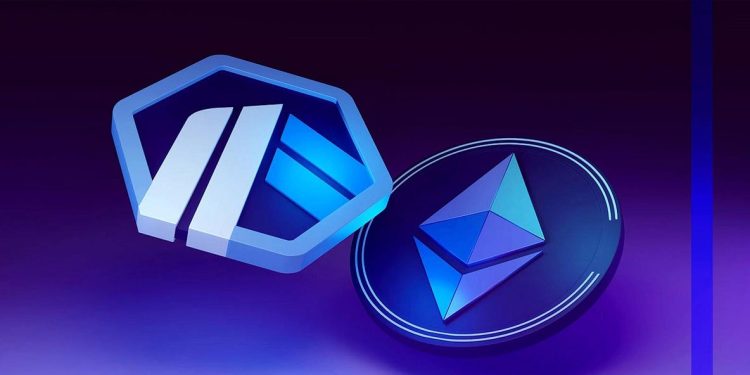Ethereum, as a leading blockchain platform, has faced significant challenges regarding scalability and transaction costs. With the increasing number of decentralized applications (dApps) and users, the network often experiences congestion, leading to higher gas fees and slower transaction times. To address these issues, Layer 2 solutions like Arbitrum have emerged, providing a promising pathway for businesses and developers seeking efficient blockchain solutions.
Understanding Arbitrum
Arbitrum is a Layer 2 scaling solution developed by Offchain Labs that leverages Optimistic Rollups to improve the performance of Ethereum. This technology allows transactions to be processed off-chain while maintaining a connection to the Ethereum mainnet. By processing transactions off-chain and then batching them for submission to the Ethereum mainnet, Arbitrum significantly reduces the load on the main network. This method not only enhances transaction speed but also lowers costs, making it an attractive option for businesses looking to build on Ethereum.
Key Features of Arbitrum
Arbitrum offers several key features that set it apart from other Layer 2 solutions:
Optimistic Rollups: This technology allows transactions to be processed off-chain with the assumption that they are valid. Only in cases of disputes are transactions verified in detail on the mainnet. This approach minimizes the computational burden on Ethereum while maintaining security.
Compatibility: Arbitrum maintains compatibility with existing Ethereum smart contracts, enabling developers to migrate their applications without extensive modifications. This feature is particularly beneficial for businesses already operating on Ethereum who want to scale their operations without starting from scratch.
Lower Fees: By bundling transactions, Arbitrum reduces gas fees significantly compared to transactions processed directly on Ethereum. This cost reduction is crucial for businesses that rely on frequent transactions or those operating in price-sensitive markets.
Faster Transactions: Users experience quicker transaction confirmations due to reduced congestion on the mainnet. This speed is essential for applications that require real-time interactions, such as gaming or trading platforms.
How Arbitrum Works
Arbitrum operates through a series of steps that facilitate efficient transaction processing:
1. Transaction Initiation: Users initiate transactions on the Arbitrum network through their dApps or wallets.
2. Off-Chain Processing: These transactions are processed off-chain by Arbitrum’s virtual machine. The off-chain environment allows for rapid execution without waiting for confirmation from the Ethereum mainnet.
3. Batching: Once processed, transactions are bundled together and sent to the Ethereum mainnet as a single transaction. This batching process minimizes the number of interactions with the mainnet, reducing congestion and costs.
4. Verification: The Ethereum network verifies these batches using cryptographic proofs, ensuring that they are valid without needing to check each individual transaction. This verification process maintains the integrity of the blockchain while allowing for efficient scaling.
This systematic approach allows Arbitrum to handle thousands of transactions per second while maintaining high-security standards inherent in Ethereum.
Benefits for Businesses
For businesses considering blockchain development, Arbitrum offers several advantages:
Cost Efficiency: Lower transaction fees enable businesses to operate more economically, especially during peak usage times on Ethereum. For example, projects that involve microtransactions can thrive in an environment where fees are minimal.
Scalability: With the ability to process many transactions simultaneously, businesses can scale their operations without worrying about network congestion. This scalability is particularly important for startups looking to grow rapidly as user demand increases.
User Experience: Faster transaction times improve user satisfaction and engagement with dApps. A smooth user experience can lead to higher retention rates and increased usage of applications built on Arbitrum.
Developer-Friendly Environment: The ease of integration with existing Ethereum tools and libraries makes it simpler for developers to build and deploy applications on Arbitrum. This accessibility can accelerate development timelines and reduce costs associated with creating new dApps.
Use Cases for Arbitrum
Arbitrum’s capabilities make it suitable for various applications across different industries:
Decentralized Finance (DeFi): Many DeFi platforms have adopted Arbitrum to provide users with lower fees and faster transactions. Popular protocols like Uniswap and Aave have deployed versions on Arbitrum, allowing users to trade and lend assets more efficiently.
Non-Fungible Tokens (NFTs): Artists and creators can mint and trade NFTs at reduced costs, fostering innovation in digital art and collectibles. The ability to create NFTs without incurring high fees encourages more creators to enter the market.
Gaming and Metaverse Projects: Blockchain games can utilize Arbitrum’s scalability to support complex interactions without incurring prohibitive costs. Fast transaction speeds are crucial in gaming environments where real-time interactions enhance gameplay experiences.
Supply Chain Management: Businesses can track products through supply chains using dApps built on Arbitrum, benefiting from lower costs associated with recording each transaction while ensuring transparency and traceability.
Challenges Facing Arbitrum
Despite its advantages, Arbitrum faces certain challenges:
Competition: Other Layer 2 solutions like Optimism also offer similar benefits, leading to competition for developers and users. As more Layer 2 solutions emerge, distinguishing features will become increasingly important for attracting projects.
Network Security: While optimistic rollups provide efficiency, they rely on users to challenge invalid transactions, which could pose risks if not managed properly. Ensuring robust mechanisms for dispute resolution will be critical for maintaining trust in the system.
Integration with Ethereum Upgrades: As Ethereum transitions towards its 2.0 version with Proof of Stake (PoS), how well Layer 2 solutions integrate with these changes remains a crucial consideration. Ongoing collaboration between Layer 2 developers and Ethereum core teams will be essential for future success.
The Future of Arbitrum and Ethereum
As Ethereum continues to evolve with upcoming upgrades aimed at improving scalability, solutions like Arbitrum will play a vital role in maintaining the network’s usability. The success of such Layer 2 solutions will depend on their ability to attract developers and users while ensuring security and efficiency.
The future looks promising as more projects recognize the benefits of utilizing Arbitrum Layer 2 solutions. With ongoing development efforts focused on enhancing performance and user experience, we can expect further innovations that will expand its capabilities even more.
Moreover, as businesses increasingly seek blockchain solutions that offer both cost-effectiveness and speed, platforms like Arbitrum will likely become integral components of their digital strategies. The growing adoption of decentralized finance (DeFi) applications further underscores this trend; as these platforms scale up operations through Layer 2 solutions, they can serve larger user bases without compromising service quality.
Conclusion
In conclusion, Arbitrum stands out as a robust solution for businesses looking to scale their operations on Ethereum. Its ability to provide faster and cheaper transactions without compromising security makes it an ideal choice for developers aiming to create efficient dApps. As more organizations explore blockchain technology’s potential benefits, understanding how Layer 2 solutions like Arbitrum work will be crucial in making informed decisions about their digital infrastructure.
For businesses interested in exploring Layer 2 solutions further, consider partnering with Codezeros. Their expertise in blockchain development can help you effectively leverage Arbitrum’s capabilities while navigating the complexities of building on this innovative platform.
This blog provides an in-depth overview of how Arbitrum addresses scalability challenges faced by Ethereum while offering practical insights for businesses looking into blockchain development opportunities. With over 3,000 words dedicated to explaining its features, benefits, use cases, challenges, and future prospects, this piece serves as a comprehensive guide for those interested in adopting this promising technology.













